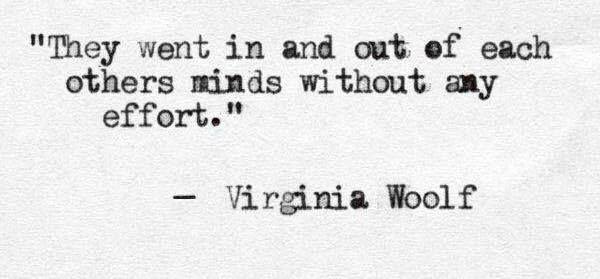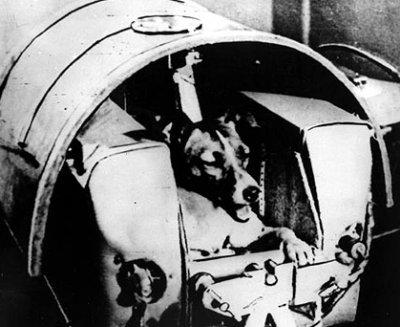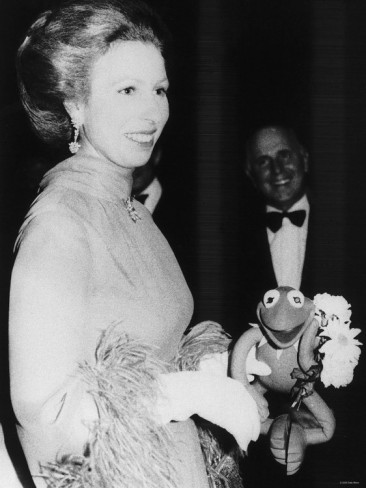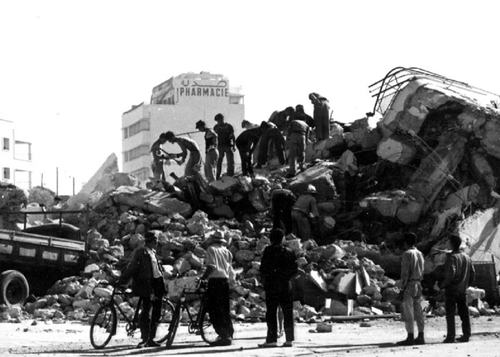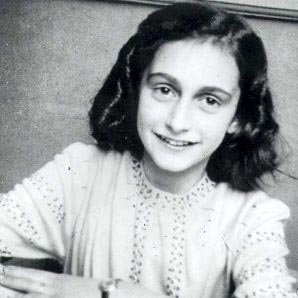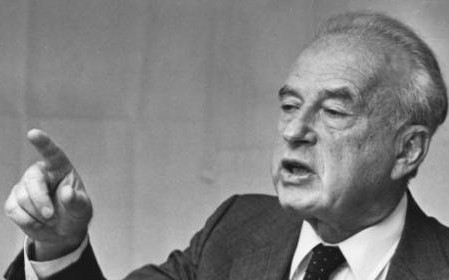Virginia Woolf 1/25/1882 – 3/28/1941 British author.
Synopsis
Born into a privileged English household in 1882, writer Virginia Woolf was raised by free-thinking parents. She began writing as a young girl and published her first novel, The Voyage Out, in 1915. Her nonlinear, free form prose style inspired her peers and earned her much praise. She was also known for her mood swings and bouts of deep depression. She committed suicide in 1941, at the age of 59.
Early Life

English writer Virginia Woolf was raised in a remarkable household. Her father, Sir Leslie Stephen, was an historian and author, and also one of the most prominent figures in the golden age of mountaineering. Woolf’s mother, Julia Prinsep Stephen (née Jackson), had been born in India and later served as a model for several Pre-Raphaelite painters. She was also a nurse and wrote a book on the profession. Woolf had three full siblings and four half-siblings; both of her parents had been married and widowed before marrying each other. The eight children lived under one roof at 22 Hyde Park Gate, Kensington.
Two of Woolf’s brothers had been educated at Cambridge, but all the girls were taught at home and utilized the splendid confines of the family’s lush Victorian library. Moreover, Woolf’s parents were extremely well connected, both socially and artistically. Her father was a friend to William Thackeray and George Henry Lewes, as well as many other noted thinkers. Her mother’s aunt was the famous 19th century photographer Julia Margaret Cameron. For these reasons and more, Virginia Woolf was ideally situated to appreciate and experiment with the art of writing.
From the time of her birth, on January 25, 1882, until 1895, Woolf spent her summers in St. Ives, a beach town at the very southwestern tip of England. The Stephens’ summer home, Talland House, which is still standing today, looks out at the dramatic Porthminster Bay and is a short walking distance to the Godrevy lighthouse. In her later memoirs, Woolf recalled St. Ives with a great fondness. In fact, she incorporated scenes from those early summers into her modernist novel, To the Lighthouse (1927).
As a young girl, Virginia was light-hearted and playful. She started a family newspaper, the Hyde Park Gate News, to document her family’s humorous anecdotes. She had, however, been traumatized at the age of six when her half-brothers George and Gerald Duckworth sexually abuse her. This dark spot was only made deeper and more permanent when her mother suddenly died at the age of 49. The hormones of early adolescence and the undeniable reality of this huge loss spun Woolf into a nervous breakdown, only made worse when two years later, her half-sister Stella also died.
Despite her misery, Woolf managed to take classes in German, Greek and Latin at the Ladies’ Department of King’s College London. Her four years of study introduced her to a handful of radical feminists at the helm of educational reforms. In 1904, her father died. His passing was climatic; during this time she was institutionalized. Virginia Woolf’s dance between literary expression and personal desolation would continue for the rest of her life.
When Virginia was in her early 20s, her sister Vanessa and brother Adrian sold the family home in Hyde Park Gate, and purchased a house in the Bloomsbury area of London. Through her siblings’ connections, Virginia became acquainted with several members of the Bloomsbury Group, a circle of intellectuals and artists who became famous in 1910 for their Dreadnought hoax, a practical joke in which members of the group dressed up as a delegation of Ethiopian royals and successfully persuaded the English Royal Navy to show them their warship, the HMS Dreadnought. Woolf disguised herself as a bearded man. After the outrageous act, Leonard Woolf, a writer and a member of the group, took a fancy to Virginia. By 1912, she and Leonard were married. The two shared a passionate love for one another for the rest of their lives.

General Idi Amin has seized power from President Milton Obote, the man who led Uganda to independence in 1962.
The general led a military coup while the president was out of the country attending the Commonwealth conference in Singapore.
Ugandan troops have sealed off Entebbe airport and there are reports of tanks and soldiers on the streets of the capital, Kampala. The president’s residence is said to have been surrounded and major road links have been blocked.
Dr Obote became the country’s first prime minister in 1962 at the head of an uneasy coalition between his own Uganda People’s Congress and the Kabaka Yekka or King’s party representing the Baganda tribe from the largest and richest province of the country.
Sir Edward Mutesa, better known as “King Freddie”, became president.
Four years later Obote ousted the king and revised the constitution to make himself president.
Boxing champion
General Amin, for seven years heavyweight boxing champion of Uganda, spent most of his army career as a sergeant, but once Dr Obote became president was rapidly promoted to chief of the armed forces.
A broadcast on Uganda radio accused the Obote government of corruption and said that ministers and senior civil servants owned cars, fleets of buses and even aeroplanes.
The broadcast said the army believed President Obote’s policies would lead to bloodshed, accusing him of giving preferential treatment to the Lango region in the north of the country.
Cheering crowds were reported in the streets of Kampala after the radio broadcast.
The army has imposed a night-time curfew.
Dr Obote arrived at Nairobi airport in Kenya tonight and was taken immediately to a hotel where he is holding talks with the Kenyan vice president, Arap Moi and the attorney general and foreign minister.
In Context
Reports from Uganda had indicated that revolution against Obote’s regime was brewing. He survived an assassination attempt in 1969.
After the coup, he went into exile in Tanzania, from where he tried to organise his comeback.
In 1979, Amin was toppled by Ugandan rebels and Tanzanian troops. He fled the country in 1979 and spent his last years in exile in Saudi Arabia where he died in August 2003.
In 1980 Obote was re-elected president and established a multi-party democracy.
But the army remained unwilling to submit to his control and in 1985 he was deposed in a second military coup. He has since lived in Zambia.
Yoweri Museveni has been president of Uganda since 1986.
2004: Nasa rover looks for water on Mars
The second of two Nasa rovers sent to explore Mars has landed on the surface of the planet, where it will look for signs of water.
The Opportunity rover touched down at 0505 GMT, on the opposite side of Mars from where its sister rover, Spirit, landed three weeks ago.
After a promising start sending back striking colour photographs of the Martian surface, the Spirit rover has run into difficulties and stopped working altogether last week.
Space scientists say they are making progress on fixing the probe, but that it could take days or weeks to put right.

‘Alien place’
After a six-month journey from Earth, the Opportunity landed on a smooth, flat plain in the highest altitude landing ever attempted by Nasa.
It sent images back of its landing site showing an unfamiliar, largely featureless landscape except for a conspicuous outcrop of bedrock nearby.
“This is a beautiful, alien place, a world unlike any we’ve seen before,” said Professor Steve Squyres, principal payload investigator.
He added that Opportunity could have landed in a crater and that the bedrock could be the rim of that crater.
The rock has a slab-like form which scientists say could have been created either by volcanic activity or by the action of water.
Gentle landing
The rover’s airbags have made distinctive imprints in the Martian soil, suggesting it may be fine-grained and multi-layered. It is also much darker in colour than the soil at Spirit’s Gusev Crater landing site, 10,600 km (6,600 miles) away.
Scientists believe the soil is rich in a mineral called grey haematite, usually formed on Earth in the presence of water.
Opportunity approached the Martian surface at a speed of 19,000 km/h (12,000 mph). It deployed a parachute to slow its descent and airbags to cushion its landing.
Rockets on the lander counteracted light gusts of wind during the descent.
Because of this, it touched down with a force of between two and three Gs – an exceptionally gentle landing.
The rover was designed to withstand a landing of up to 40 Gs.
Nasa will now spend a week unpacking and testing the six-wheeled vehicle.
In Context
A week later, Opportunity rolled off its lander on to the Red Planet and began its investigations of the surface. Its twin probe, Spirit, returned to working order soon afterwards.
In March 2004 Opportunity showed unequivocally that Mars had had the right conditions to support life at some time in its history.
Analysis of rocks at the landing site showed they had been exposed to water. Scientists now believe that the probe had come down on the shore of what had been a salty lake or ocean.
Both probes continued to work so well that their original 90-day missions were extended into late 2006.
In January 2006 Nasa celebrated two years on the surface of Mars in what has been the space agency’s biggest successes of recent years.
Nasa launched a third probe, the Mars Reconnaissance Orbiter, in August 2005 to map and find water.
In March 2006 it joined two other orbiters, the Mars Global Surveyor and Mars Odyssey, and one European orbiter, Mars Express, circling the planet.
Historical Events
On This Day: Births
On This Day: Deaths
- 389 – Gregory of Nazianzus, Byzantine archbishop and saint (b. 329)
- 477 – Genseric, Vandals king (b. 389)
- 844 – Pope Gregory IV (b. 827)
- 1067 – Emperor Yingzong of Song (b. 1032)
- 1366 – Henry Suso, German mystic (b. 1300)
- 1431 – Charles II, Duke of Lorraine (b. 1364)
- 1494 – Ferdinand I of Naples (b. 1423)
- 1559 – Christian II of Denmark (b. 1481)
- 1578 – Mihrimah Sultan, Ottoman daughter of Suleiman the Magnificent (b. 1522)
- 1586 – Lucas Cranach the Younger, German painter (b. 1515)
- 1640 – Robert Burton, English scholar (b. 1577)
- 1670 – Nicholas Francis, Duke of Lorraine (b. 1612)
- 1726 – Guillaume Delisle, French cartographer (b. 1675)
- 1733 – Sir Gilbert Heathcote, 1st Baronet, English banker and politician (b. 1652)
- 1751 – Paul Dudley, American lawyer and politician (b. 1675)
- 1852 – Fabian Gottlieb von Bellingshausen, Russian admiral, cartographer, and explorer (b. 1778)
- 1881 – Konstantin Thon, Russian architect, designed the Grand Kremlin Palace and Cathedral of Christ the Saviour (b. 1794)
- 1884 – Périclès Pantazis, Greek painter (b. 1849)
- 1907 – René Pottier, French cyclist (b. 1879)
- 1908 – Ouida, English author (b. 1839)
- 1908 – Mikhail Chigorin, Russian chess player (b. 1850)
- 1912 – Dmitry Milyutin, Russian field marshal (b. 1816)
- 1925 – Ivan Vucetic, Croatian anthropologist (b. 1858)
- 1939 – Charles Davidson Dunbar, Scottish piper (b. 1870)
- 1940 – Elias Simojoki, Finnish clergyman and activist (b. 1899)
- 1947 – Al Capone, American mobster (b. 1899)
- 1949 – Makino Nobuaki, Japanese politician (b. 1861)
- 1954 – M. N. Roy, Indian activist and theorist (b. 1887)
- 1957 – Thomas January, American soccer player (b. 1886)
- 1957 – Ichizō Kobayashi, Japanese businessman, founded Hankyu Hanshin Holdings (b. 1873)
- 1957 – Kiyoshi Shiga, Japanese physician (b. 1871)
- 1958 – Robert R. Young, American businessman (b. 1897)
- 1960 – Diana Barrymore, American actress (b. 1921)
- 1963 – Wilson Kettle, Canadian diver and fisherman (b. 1860)
- 1966 – Saul Adler, Russian-English parasitologist (b. 1895)
- 1969 – Irene Castle, English dancer (b. 1887)
- 1970 – Jane Bathori, French soprano (b. 1877)
- 1970 – Eiji Tsuburaya, Japanese director and producer (b. 1901)
- 1971 – Barry III, Guinean politician (b. 1923)
- 1972 – Erhard Milch, German field marshal (b. 1892)
- 1975 – Charlotte Whitton, Canadian politician, 46th Mayor of Ottawa (b. 1896)
- 1976 – Chris Kenner, American singer-songwriter (b. 1929)
- 1978 – Skender Kulenović, Bosnian poet (b. 1910)
- 1980 – Queenie Watts, English actress and singer (b. 1926)
- 1981 – Adele Astaire, American dancer (b. 1897)
- 1982 – Mikhail Suslov, Soviet politician (b. 1902)
- 1985 – Ilias Iliou, Greek jurist and politician (b. 1904)
- 1987 – Frank J. Lynch, American lawyer, judge, and politician (b. 1922)
- 1990 – Ava Gardner, American actress (b. 1922)
- 1994 – Stephen Cole Kleene, American mathematician (b. 1909)
- 1996 – Jonathan Larson, American composer and playwright (b. 1960)
- 1997 – Dan Barry, American cartoonist (b. 1923)
- 1999 – Sarah Louise Delany, American author and educator (b. 1889)
- 1999 – Ted Mallie, American radio and television announcer (b. 1924)
- 1999 – Robert Shaw, American conductor (b. 1916)
- 2003 – Sheldon Reynolds, American director, producer, and screenwriter (b. 1923)
- 2003 – Samuel Weems, American lawyer and author (b. 1936)
- 2004 – Fanny Blankers-Koen, Dutch runner (b. 1918)
- 2004 – Miklós Fehér, Hungarian footballer (b. 1979)
- 2004 – Zurab Sakandelidze, Georgian basketball player (b. 1945)
- 2005 – Stanisław Albinowski, Polish economist and journalist (b. 1923)
- 2005 – William Augustus Bootle, American lawyer and judge (b. 1902)
- 2005 – Philip Johnson, American architect, designed the PPG Place and Crystal Cathedral (b. 1906)
- 2005 – Manuel Lopes, Cape Verdean author and poet (b. 1907)
- 2005 – Ray Peterson, American singer (b. 1935)
- 2005 – Netti Witziers-Timmer, Dutch runner (b. 1923)
- 2006 – Anna Malle, American porn actress (b. 1967)
- 2008 – Christopher Allport, American actor (b. 1947)
- 2008 – Evelyn Barbirolli, English oboe player (b. 1911)
- 2009 – Ewald Kooiman, Dutch organist (b. 1938)
- 2009 – Kim Manners, American director and producer (b. 1951)
- 2010 – Ali Hassan al-Majid, Iraqi general and politician, Iraqi Minister of Defence (b. 1941)
- 2011 – Vassilis C. Constantakopoulos Greek captain and businessman (b. 1935)
- 2011 – Vincent Cronin, Welsh historian and author (b. 1924)
- 2012 – Alfred Ball, English air marshal (b. 1921)
- 2012 – Paavo Berglund, Finnish violinist and conductor (b. 1929)
- 2012 – Veronica Carstens, German wife of Karl Carstens (b. 1923)
- 2012 – Jacques Maisonrouge, French businessman (b. 1924)
- 2012 – Len McIntyre, English rugby player (b. 1933)
- 2012 – Franco Pacini, Italian astrophysicist and academic (b. 1939)
- 2012 – Mark Reale, American guitarist and songwriter (Riot and Westworld) (b. 1955)
- 2012 – Mary Duke Biddle Trent Semans, American philanthropist (b. 1920)
- 2012 – Robert Sheran, American lawyer, judge, and politician (b. 1916)
- 2012 – Alexander Zhitinsky, Russian journalist and author (b. 1941)
- 2013 – Martial Asselin, Canadian lawyer and politician, 25th Lieutenant Governor of Quebec (b. 1924)
- 2013 – Rade Bulat, Croatian activist and politician (b. 1920)
- 2013 – Gregory Carroll, American singer-songwriter and producer (The Orioles and The Four Buddies) (b. 1929)
- 2013 – Normand Corbeil, Canadian composer (b. 1956)
- 2013 – Kevin Heffernan, Irish footballer and manager (b. 1929)
- 2013 – Max Kampelman, American diplomat (b. 1920)
- 2013 – Frank Keating, English journalist and author (b. 1937)
- 2013 – Irene Koumarianou, Greek actress (b. 1931)
- 2013 – Aase Nordmo Løvberg, Norwegian soprano (b. 1923)
- 2013 – Shozo Shimamoto, Japanese painter (b. 1928)
- 2014 – Bruce Barmes, American baseball player (b. 1929)
- 2014 – Arthur Doyle, American singer-songwriter, saxophonist, and flute player (b. 1944)
- 2014 – Heini Halberstam, Czech-English mathematician and academic (b. 1926)
- 2014 – John Robertson, Canadian journalist (b. 1934)
- 2014 – Emanuel Saldaño, Argentinian cyclist (b. 1985)
- 2014 – Dave Strack, American basketball player and coach (b. 1923)
- 2014 – Gyula Sax, Hungarian chess player (b. 1951)
- 2014 – Morrie Turner, American cartoonist (b. 1923)
- 2014 – Dennis Wirgowski, American football player (b. 1947)
via:bbc.co.uk, historyorb.com, nytimes.com, wikipedia.org

